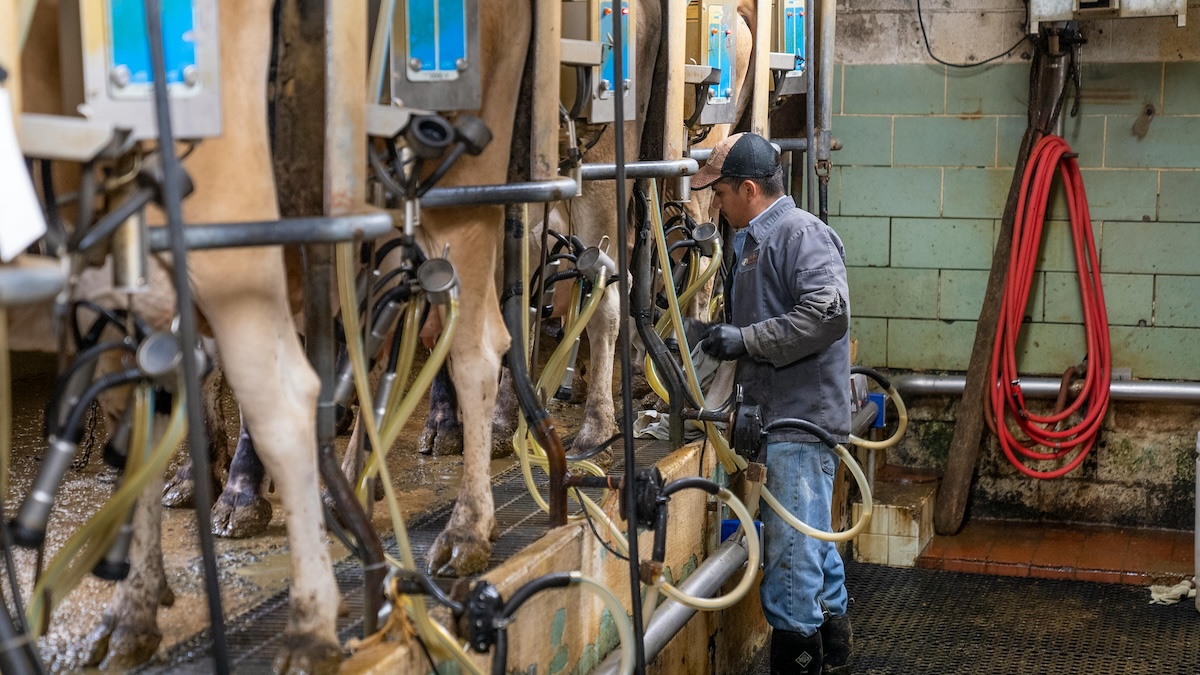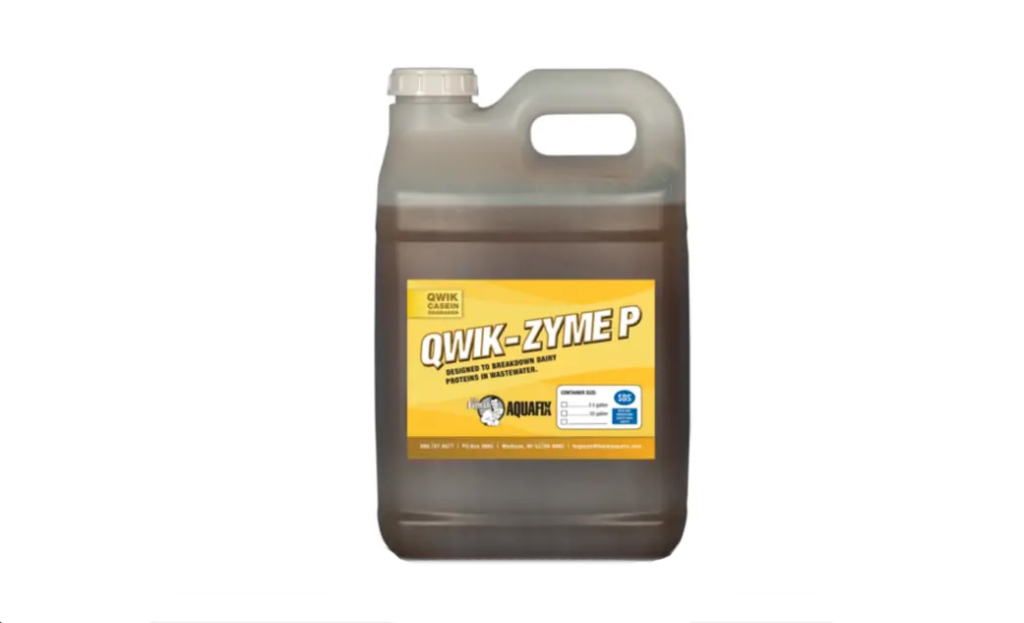Dairy processors know all too well that the wastewater that comes from milk, cheese, and yogurt production can be difficult to manage. The main culprit is casein, the dominant protein in milk. It is tough to break down, adds to COD and BOD, and can cause headaches for operators trying to keep biological systems stable.
Qwik Zyme P provides a natural, enzyme-based solution to this problem. By targeting casein and other milk proteins directly, it helps plants lower organic loads, improve biological treatment, and keep operations running smoothly.
In this blog, we explain how Qwik Zyme P works, its benefits for dairy wastewater, and a real-world case study showing its impact.
The Problem with Casein in Dairy Wastewater
Casein makes up about 80% of the total protein in milk. When dairy plants process cheese, yogurt, paneer, or milk powder, casein-rich wastewater is generated in large volumes.
Why casein is difficult to handle in treatment systems:
- It resists biodegradation in conventional processes
- It raises COD and BOD levels
- It clogs filters and pipes
- It can cause sludge bulking and foaming in reactors
For plants working under strict discharge limits, untreated casein quickly becomes a costly problem.
What Is Qwik Zyme P?
At Water Quality Solutions, we believe in the products we sell and make sure each one is up to the standard we expect. Qwik Zyme P is no different and is an excellent specialised proteolytic enzyme blend that’s designed for high-protein wastewater.
It works by breaking down casein and whey proteins into smaller, more digestible molecules. Once they’re broken down, these compounds are much easier for bacteria in downstream treatment to consume.
Qwik Zyme P is available in both liquid and powder form, and it can be dosed directly into equalisation tanks, buffer tanks, or upstream of biological treatment units.
How Qwik Zyme P Works
As we mentioned before, Qwik Zyme P helps to break down casein.
Here’s how it works:
Enzymatic hydrolysis of casein
Protease enzymes in Qwik Zyme P cut the peptide bonds in casein, reducing them to small peptides and amino acids. These are much easier for bacteria to metabolise.
Lower COD and BOD
By breaking down proteins before they enter the aeration tank or reactor, Qwik Zyme P reduces the organic load, making treatment more efficient.
Improved process stability
Undigested proteins can trigger foaming and bulking, as well as poor settling. Qwik Zyme P helps maintain microbial balance and avoids these disruptions.
Benefits of Using Qwik Zyme P
To give you a better idea of the benefits, we’ve created a table. This way, you can clearly see just how much it can help:
|
Benefit |
Impact on Dairy Plants |
|
Effective protein breakdown |
Specially formulated for casein and whey in high-protein effluents |
|
Improved biological efficiency |
Reduces COD/BOD load and supports stable downstream processes |
|
Eco-friendly and non-toxic |
Safe for operators, aquatic life, and the environment |
|
Lower operating costs |
Cuts aeration energy use, chemical consumption, and sludge disposal |
| Easy to apply |
The liquid solution is suitable for tanks, DAF units, and biological stages |
Where to Use Qwik Zyme P
Qwik Zyme P is designed for a wide range of dairy applications, including:
- Milk processing wastewater
- Cheese and paneer plants
- Yogurt and dessert production
- Whey processing
- Clean-in-place (CIP) wash water
It can be applied in:
- Equalisation tanks
- Dissolved air flotation (DAF) systems
- Aeration tanks
- Sequential batch reactors (SBRs)
- Moving bed biofilm reactors (MBBRs)
Case Study: Qwik Zyme P at Shree Doodh Dairy Pvt. Ltd.
Location: Anand, Gujarat, India
Industry: Cheese and paneer production
Capacity: 200 m³/day
The Challenge
The plant generated about 200,000 litres of wastewater daily, with high levels of casein and whey.
Their SBR struggled with:
- COD levels above 5,500 mg/L
- Sludge bulking due to undigested proteins
- Foam and odour issues
The Solution
The plant introduced Qwik Zyme P at the equalisation tank inlet:
- Shock dose: 5 ppm for five days
- Maintenance dose: 2 ppm daily
Results After 14 Days
|
Parameter |
Before Qwik Zyme P | After 14 Days |
|
COD (mg/L) |
5,500+ |
3,200 |
|
BOD (mg/L) |
2,100 |
1,100 |
| SVI (mL/g) | 250 |
160 |
The Outcome
The plant achieved a 40% reduction in COD, better sludge settling, and the elimination of foam. Energy use for aeration fell by around 30 percent, and the facility consistently met PCB discharge standards.
“Qwik Zyme P has been a game changer. It solved a persistent problem we struggled with for months, and now our system runs much more smoothly.”
– Mr. Ramesh Patel, Operations Manager
How to Use Qwik Zyme P
- Assess the protein load through wastewater analysis
- Apply an initial dose based on volume and concentration
- Continue maintenance dosing to sustain enzymatic activity
- Monitor COD, BOD, and sludge parameters to fine-tune dosing
Your supplier can provide tailored dosing guidance for your system.
Final Thoughts
Protein-rich wastewater can be one of the toughest challenges in dairy processing, but luckily Qwik Zyme P can help. Due to this, plants can break down casein efficiently, reduce organic loads, as well as improve the performance of their biological systems. The result is lower costs, easier compliance, and a cleaner, more sustainable operation.
Get FREE Expert Advice
Need expert advice on using Qwik Zyme P in your plant? Purchase it here now or contact us today and we’ll be happy to help.


